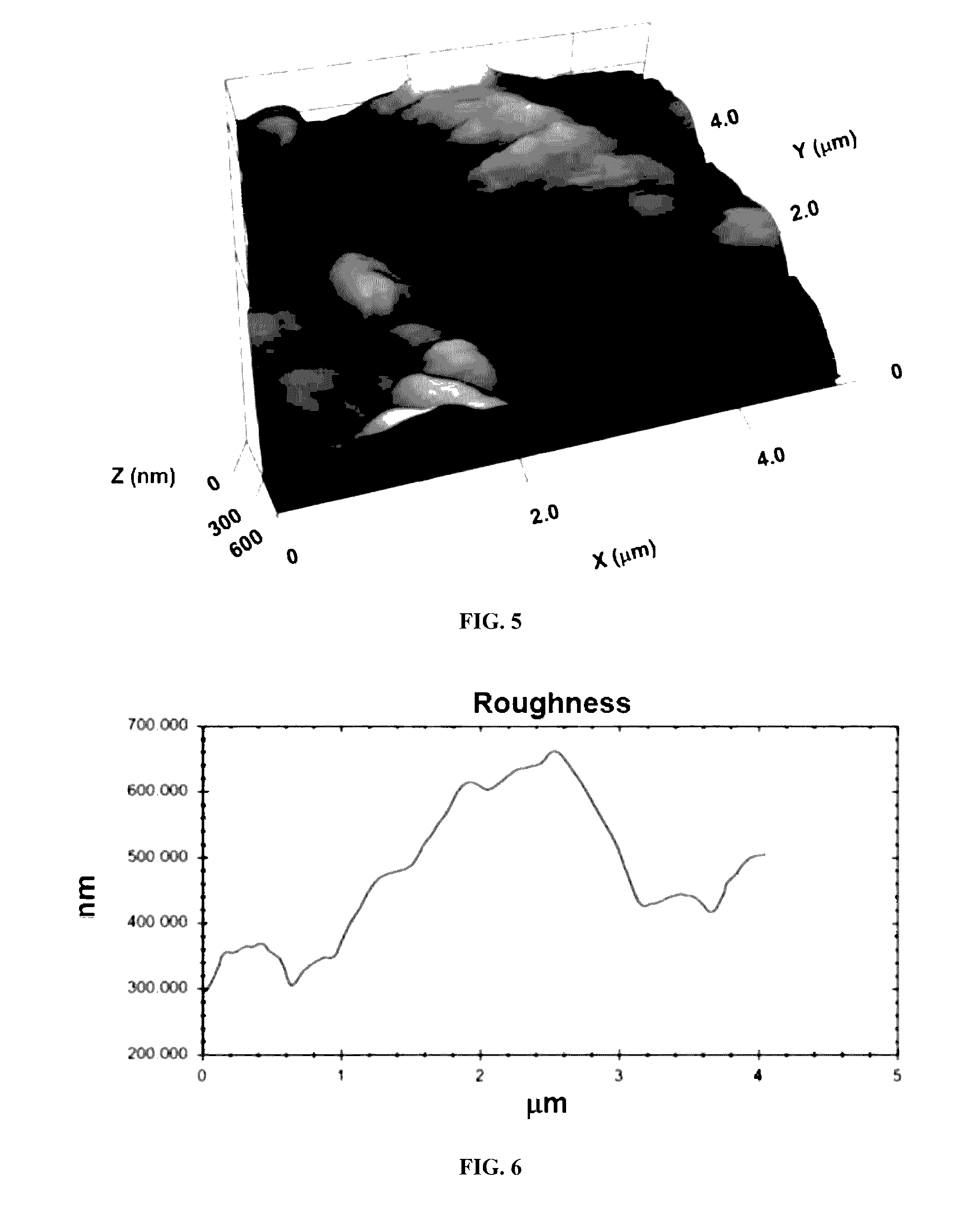Laser ablation method for treating a copper alloy containing metallic surface and increasing hydrophobicity
a technology of metallic surface and laser ablation, which is applied in the direction of laser beam welding apparatus, welding/soldering/cutting articles, manufacturing tools, etc., can solve the problems of limited practical application of the treated surface, difficult to achieve desired thermal texturing, and uneven removal at the surface, so as to increase the fracture toughness of the ablated metallic surface
- Summary
- Abstract
- Description
- Claims
- Application Information
AI Technical Summary
Benefits of technology
Problems solved by technology
Method used
Image
Examples
example 1
[0090]A CO2 laser (LC-ALPHAIII) delivering a nominal output power of 2 kW was used to ablate the workpiece surface. The nominal focal length of the focusing lens was 127 mm. The laser beam diameter focused at the workpiece surface was on the order of 200 μm. Nitrogen assist gas emerging from the conical nozzle and co-axial with the laser beam was used. The laser surface ablation process was carried out with different laser parameters. In this case, reducing laser output power below 2 kW resulted in high surface roughness due to melt flow over the surface. In addition, reducing laser scanning speed below 10 cm s−1 increased the surface roughness due to over melting at the surface. Alternatively, evaporation at the surface ceased and melting took place along the scanning tracks with increasing laser scanning speeds beyond 10 m s−1. Therefore, through experimentation, the optimal laser parameters resulting in surface ablation with low surface roughness were sel...
example 2
Characterization Methods of Laser Ablated Surfaces
[0092]Material characterization of the laser ablated surfaces was carried out using scanning electron microscopy (SEM), energy-dispersive X-ray spectroscopy (EDS), atomic force microscopy (AFM), and X-ray diffraction (XRD) spectroscopy. A Jeol 6460 electron microscope was used for the SEM examination and a Bruker D8 Advanced with CuKα radiation was used for the XRD analysis. A typical setting for the XRD system was 40 kV and 30 mA, the scanning angle (2θ) was ranged over 20-80°. The parabolically shaped Gobel Mirror was used in the Bruker D8 Advanced, this provided highly parallel X-ray beams. The texture analysis of the laser ablated surfaces was performed using an AFM, Agilent 5100 AFM / SPM, in contact mode. The tip was made of a silicon nitride probe (r=20-60 nm) with a manufacturer specified force constant k of 0.12 N m−1.
[0093]A microphotonics digital hardness tester (MP-100TC) was used to obtain Vickers microindentation hardness...
example 3
Surface Morphology and Hydrophobicity of Laser Ablated Surfaces
[0095]FIG. 1, FIG. 2, FIG. 3, and FIG. 4 shows SEM micrographs of the laser ablated phosphor bronze surface. Laser ablation takes place during the irradiation of repetitive laser pulses along the laser scanning direction; in which case, the ablated surface forms regular laser scanning tracks. Since the laser pulse frequency is 1500 Hz and the laser scanning speed is 0.1 m s−1, overlapping of irradiated spots occurs at the surface. The overlapping ratio is on the order of 70% at the surface. The laser intensity distribution is Gaussian and the pulse intensity remains high at the irradiated spot center. This, in turn, results in surface evaporation in the region limited to the irradiated spot center and the melting takes place in the remaining region or the irradiated spot. The melt flow towards the cavity center from its neighborhood modifies the cavity shape and reduces the cavity depth. Therefore, surface texture consis...
PUM
| Property | Measurement | Unit |
|---|---|---|
| frequency | aaaaa | aaaaa |
| diameter | aaaaa | aaaaa |
| penetration depth | aaaaa | aaaaa |
Abstract
Description
Claims
Application Information
 Login to View More
Login to View More - R&D
- Intellectual Property
- Life Sciences
- Materials
- Tech Scout
- Unparalleled Data Quality
- Higher Quality Content
- 60% Fewer Hallucinations
Browse by: Latest US Patents, China's latest patents, Technical Efficacy Thesaurus, Application Domain, Technology Topic, Popular Technical Reports.
© 2025 PatSnap. All rights reserved.Legal|Privacy policy|Modern Slavery Act Transparency Statement|Sitemap|About US| Contact US: help@patsnap.com



